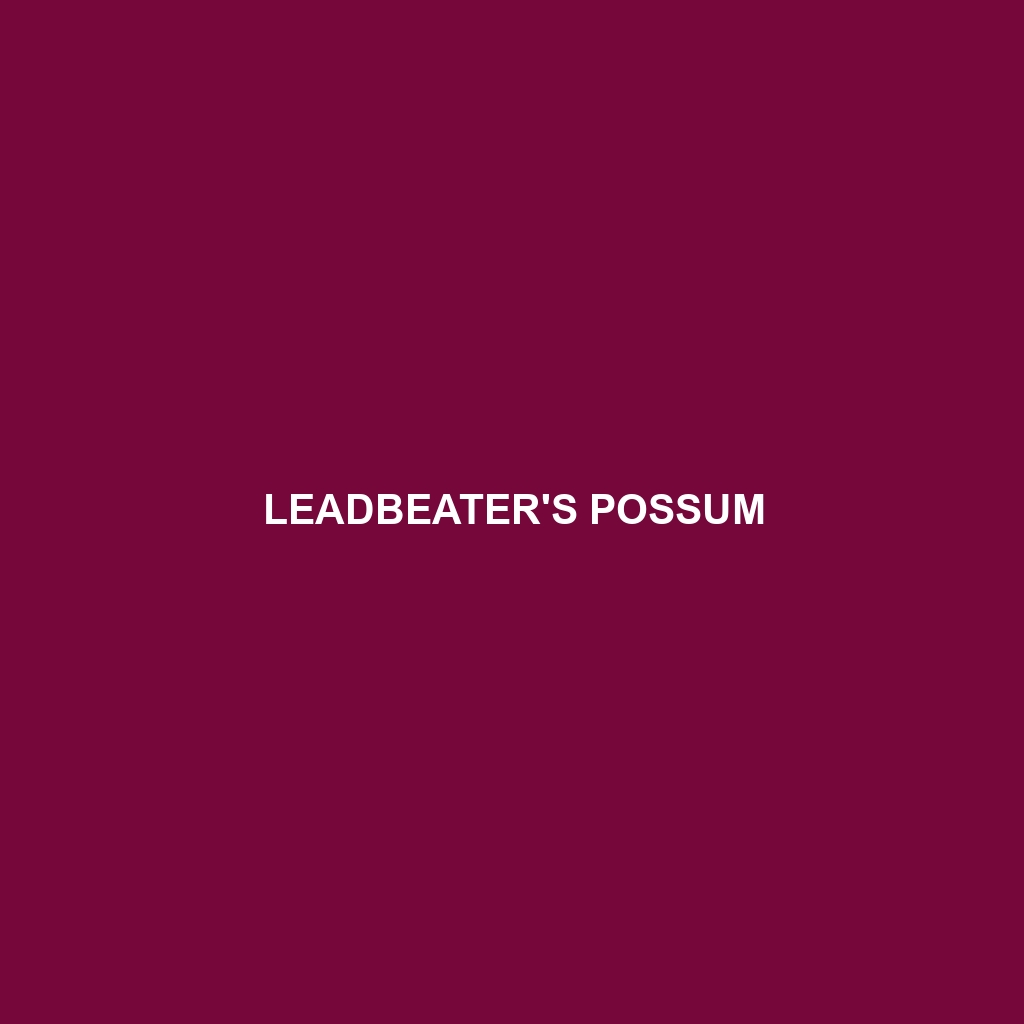Leadbeater’s Possum: An In-Depth Overview
The Leadbeater’s Possum (Gymnobelideus leadbeateri) is a small, nocturnal marsupial native to the forests of Victoria, Australia. Revered as a symbol of conservation, this critically endangered species is notable for its elusive nature and fascinating behavioral traits.
Physical Characteristics:
Size: Leadbeater’s Possum is a small creature, typically measuring between 30 to 40 centimeters in total length, including the tail. The body alone is around 15 to 17 centimeters.
Weight: Adults weigh between 100 to 160 grams.
Coloration: Their fur is predominantly grey, with a paler underbelly. A distinctive dark stripe runs from the top of the head down the center of the back.
Special Features: They have large, forward-facing eyes adapted for nocturnal vision, and a semi-prehensile tail used for balance and grasping branches.
Behaviors:
Social Interactions: Leadbeater’s Possums are highly social animals, typically living in family groups consisting of a dominant breeding pair and their offspring. They communicate through a series of high-pitched calls and body language.
Feeding Habits: They are omnivorous, feeding on a diet that includes insects, such as beetles and spiders, as well as the sap and gum of certain eucalyptus trees. Their feeding activity peaks during the night.
Ecological Roles: As both predator and prey, they play a crucial role in the ecosystem. Their foraging helps control insect populations, while they themselves serve as prey for larger animals.
Habitats:
Location: Leadbeater’s Possum inhabits the montane ash forests and sub-alpine woodlands of the Central Highlands of Victoria, Australia.
Environment: They prefer dense, old-growth forests with abundant tree hollows for nesting and a rich understory for foraging.
Adaptations:
Nocturnal Lifestyle: Their large eyes and acute hearing are perfect adaptations for night-time activity.
Arboreal Nature: With sharp claws and a prehensile tail, they are adept climbers, moving swiftly and agilely through the treetops.
Nesting: Leadbeater’s Possums construct complex nests in tree hollows, utilizing stripped bark and leaves for insulation and protection.
Conservation Status:
Current Status: Leadbeater’s Possum is listed as critically endangered, primarily due to habitat loss through logging and bushfires.
Conservation Efforts: Conservation measures include habitat protection, the establishment of breeding programs, and initiatives to manage and restore their habitat.
Fun Facts:
Leadbeater’s Possum was thought to be extinct until its rediscovery in 1961 by naturalist Eric Wilkinson.
They are sometimes referred to as “fairy possums” due to their delicate appearance and swift, graceful movements.
Despite their small size, Leadbeater’s Possums can leap impressively long distances between trees, sometimes covering gaps as wide as 3 meters.
By understanding and appreciating the unique attributes and ecological importance of Leadbeater’s Possum, we can better advocate for the conservation of this charming and vital species.
